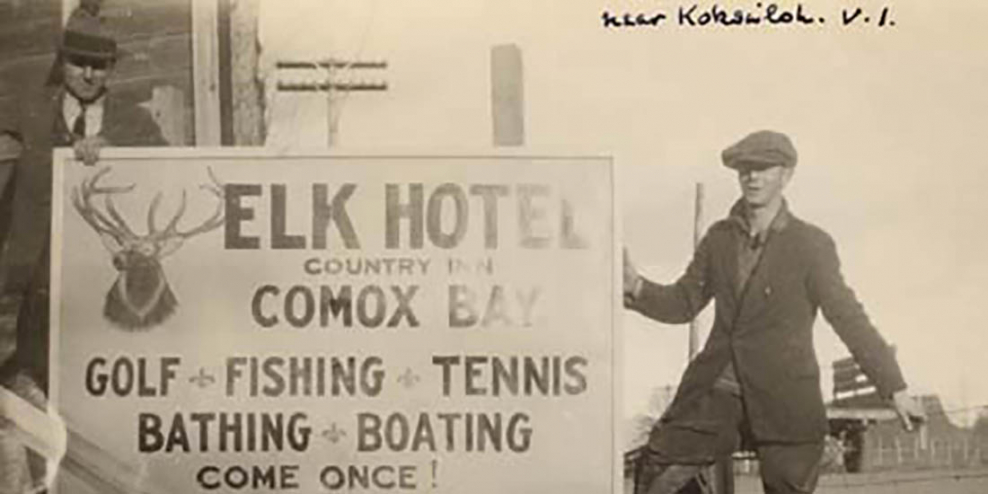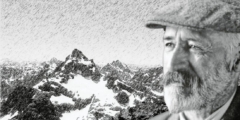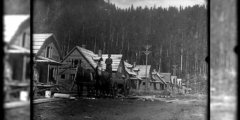News travels fast in small towns.
One hundred years ago, we didn’t have Twitter to spread it.
But when a real man of mystery moved to Comox in the 1920s, the news spread faster than wildfire.
Sidney “Dusty” d’Esterre. It’s a name that truly belongs in a movie.
Born in Bermuda, with apparent “family ties” to the DeBeers diamond and gold mines in South Africa, he was already a big fish in a small pond.
But that’s not where the real rumours started.
Speculation began when Royal Navy ships started lowering their flags every time they passed his house.
According to local rumour, this was a sign of respect from his “friend” the Crown Prince for Dusty’s most honourable deeds in the secret service during the Great War.
While we may never know what these great deeds were (or if they even happened), we know he started doing some heavy lifting when he got to Comox.
After Prohibition, Comox’s tourism industry was pretty much non-existent.
But Dusty turned out to be pretty damn good at dusting things off.
Upon arrival, he started off strong by buying the Elk Hotel in 1922. Then he made moves to form a powerful alliance.
He gathered local businessmen to buy up the 283-acre Robb Estate, and presto: Comox Golf Club Company was formed.
He advertised Comox area tennis courts, golf, boating, swimming, hunting, and fishing. Feeling hungry? He had a new dining room with—gasp!—electric lights. Comox became the ultimate new Island getaway.
The things we take for granted, right?
Comox Bay became known as a Tyee salmon fishing spot, and that attracted visitors from all over the world.
As you can imagine, all this helped shape Comox as a town. Dusty had a hand in creating a lot of the infrastructure you see to this day.
For all his gallantry, Dusty was not without his faults.
Like most wealthy men of his time, he wasn’t a fan of “outsiders.”
After the Japanese bombed Pearl Harbour, Dusty was one of the most outspoken people in favour of rounding up Japanese Canadians.
Unfortunately, like most of his ventures, this one was successful. He helped make their lives hell.
Japanese folks were confined in camps or removed from Canada, just as Dusty wanted. The damage left by the government’s racist policy can still be felt on VanIsle to this day.
Shortly after his death in 1969, the Elk Hotel he owned all those years burned to the ground. You could say Dusty came in with a bang and left with one, too.
But he didn’t just leave dust in his place.
If you walk through town, you’ll still find bits of his legacy.
He left two-fifths of his valuable Comox waterfront property to the Town. The other three-fifths went to two friends. The Town then negotiated to buy out the friends and take over the whole plot.
The old frame house was demolished. But the other building, known as Dusty’s Den, still stands. The upstairs is the Comox council chambers.
So big Comox decisions still get made in Dusty’s Den.









